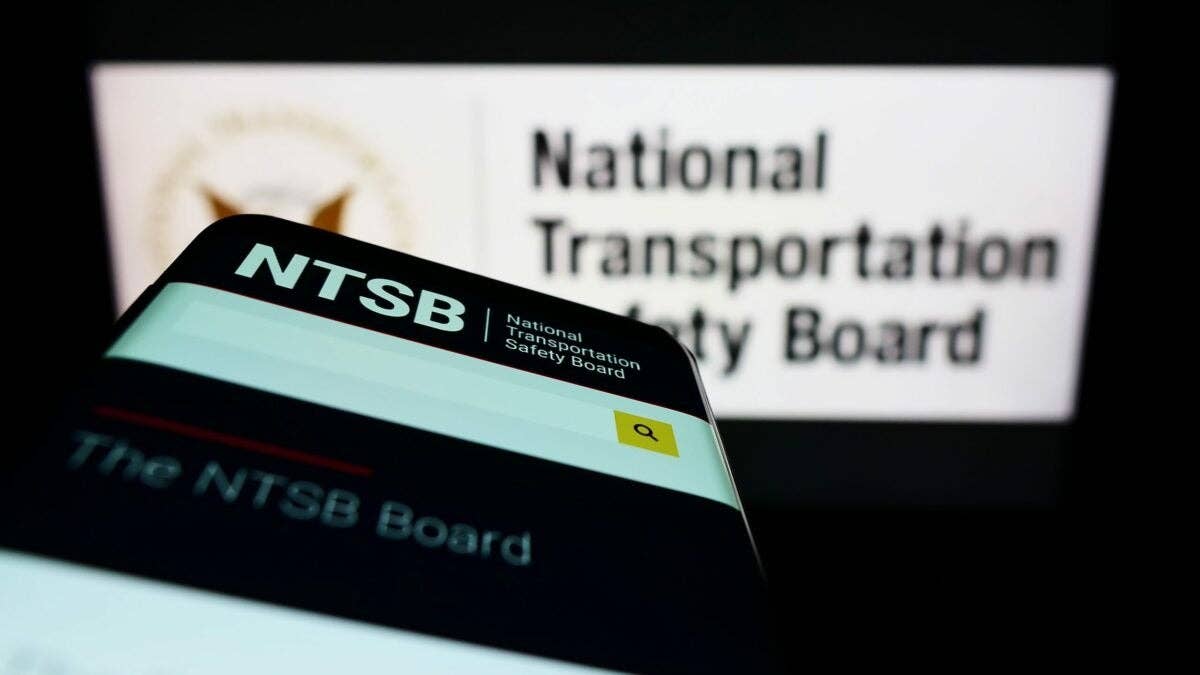NTSB to Focus on ‘Four Corners’ of PC-12 in Fatal Crash Probe
While cruising at an altitude of 26,000 feet, the pilot notified ATC that there was a problem with the autopilot and he was losing control of the aircraft.

The NTSB investigation is set to review the pilot’s experience, aircraft maintenance records, and the operating environment, an agency spokesperson said. [Credit: Shutterstock]
Investigators from the National Transportation Safety Board (NTSB) have begun gathering wreckage from the site of a Pilatus PC-12 crash that killed seven Friday near the Montana-Wyoming border.
Three of the people on board the privately owned aircraft were members of the Atlanta-based gospel group The Nelons.
According to USA Today, those who died in the crash have been identified as singers Jason and Kelly Nelon Clark, Nathan and Amber Kistler, and group assistant Melody Hodges.
The aircraft, a 2010 PC-12/47E single-engine turboprop, was registered to Haynie Enterprises Inc. It was piloted by its owner, Larry Haynie, who along with his wife, Melissa, was also killed in the accident.
According to a statement from the Gaither Management Group, the family was en route to Seattle to join the Gaither Homecoming Cruise in Alaska. It was noted that Autumn, the youngest daughter of the Kellys, and her husband, Jamie Streetman, arrived in Seattle by other means and are safe.
Flight History
The PC-12 departed from West Georgia Regional Airport (KCTJ) around 9:30 a.m. EST Friday, stopping at Nebraska City Municipal Airport (KAFK) to refuel. The aircraft lifted off around noon, heading for Billings Logan International Airport (KBIL) in Montana.
Approximately two hours into the flight while cruising at an altitude of 26,000 feet, Haynie notified controllers there was a problem with the autopilot and he was losing control of the aircraft. The ADS-B data as recorded by FlightAware.com shows multiple turns and pitch changes. The ground speed varied from 173 to 319 mph, and at one point the aircraft was descending at 5,545 feet per minute.
The ADS-B readout shows a series of descending turns before data is lost.
According to the Gillette News Record, the aircraft crashed near the town of Recluse, Wyoming, near the Montana state line, causing a small wildfire that was contained to about 38 acres. There were no injuries on the ground, although witnesses reported seeing the airplane circling and flying low before the crash.
Debris from the aircraft was found away from the main impact. One of the theories that NTSB investigators will be looking at is the possibility of an in-flight breakup, as the aircraft was not designed for such rapid and extreme altitude and airspeed changes.
According to NTSB spokesperson Keith Holloway, the investigation begins with the identification of the so-called "four corners" of the aircraft: the nose, tail and wing tips
“Part of the investigation will be to locate those sections,” Holloway told FLYING. “NTSB investigators have the experience and expertise to locate aircraft parts even from aircraft that are not quite intact. They have the knowledge of being able to locate aircrafts parts that may be unidentifiable to the average person. Unfortunately, it is not rare that NTSB investigators have situations involving scattered wreckage from a plane crash.”
When the wreckage is scattered over a wide area in a remote location, gathering it up takes time and is a painstaking but necessary process as each piece is considered evidence and part of a puzzle.
“With the use of the NTSB metallurgical lab and review of navigational devices and equipment, NTSB investigators are still able to put together the scenario of what probably happened and determine a cause of the crash,” Holloway said.
According to Holloway, the NTSB investigations involve three basic review areas: the pilot—notably their actions in the 72 hours prior to flight, as well as ratings and recency of experience—aircraft maintenance records, and the operating environment.
The agency will also listen to recordings of any ATC communications and review radar data and weather reports. If there are any witnesses to the event, they will be interviewed as well, Holloway said, adding that the NTSB will "look for electronic devices that could contain information relevant to the investigation and any available surveillance video, including from doorbell cameras.”
The NTSB preliminary report is expected to be available in a few weeks. The final report with the probable cause of the accident is several months out from being released.

Sign-up for newsletters & special offers!
Get the latest FLYING stories & special offers delivered directly to your inbox






